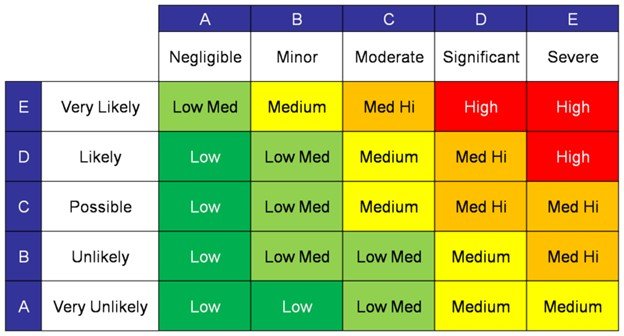Reducing Risk with Software
Reducing Risk with Software
As humans, we’re not very efficient at processing information. We’re forgetful, make mistakes, and usually feel like we get pulled in ten different directions. How do we know what to prioritize? This is where software comes into play. Business management software is one of the easiest ways to elevate your business and reduce your risk. The software can find blind spots you couldn’t see so that you can manage your business with clarity.
In this article, we’ll discuss how software reduces your risk and what items you should consider when searching for management software.
How Software Reduces Risk
Industry-specific management software allows you to focus on what’s important. The key features we’ll discuss are how it improves your work orders, route planning, and business decisions.
Proposals & Work Orders
Clear communication between you and your customers is vital to reducing risk. Software creates harmony between customer expectations and the crew’s orders. Digital proposals contain much more detail than paper versions. You can attach extra notes, optional add-ons, and images or videos of items. This saves time and answers customer questions before they arise, leading to higher proposal acceptance rates. When a proposal is accepted, the same information is transferred seamlessly into a work order. Crews save time by knowing what equipment they’ll need for each job, and they won’t forget important details because they can always refer to the digital copy.
One of our favorite features included in work orders created within SingleOps is the ability to attach aerial Google Map images of the job site with markers clearly showing the exact areas that will be worked on. This reduces the risk of crews working on areas they shouldn’t or missing items meant to be worked on.
Route Optimization
Prior to software, drivers would need to predict the optimal route to take using their best judgment and their maps app. Since management software has route optimization features, the risk for human error is greatly reduced. Using route optimization takes control out of the driver’s hands and turns it over to the software, which can analyze all the inputs and calculate the most efficient route for a driver to take in seconds. This reduces the amount of fuel, downtime, and confusion drivers have so crews can get to the job site faster and more efficiently.
If you have more questions about how route optimization works within SingleOps, you can read this help center article.
Business Decisions
Running a business can feel like flying in the dark sometimes. There’s always the possibility that you’ll be given the wrong information or not have enough information when making a decision. Management software can help organize your data to ensure you have an accurate picture of your operations.
Management software comes with reports and dashboards that allow you to analyze any aspect of your business. Some of the most helpful reports you can create are labor analysis and profitability reports. Analyzing your labor allows you to identify the most efficient and profitable crews, which you can then use to schedule your highest performing crews for the most important projects.
Besides knowing your labor profitability, the software makes it easier to calculate net-profit margins by segment. This can help you identify which segments of your business are the most profitable. Many businesses assume the segment that brings in the most revenue will also be their most profitable, but this isn’t always the case. You don’t want to run a business based on incomplete data or assumptions.
What you should consider before buying management software
Searching for the right software can be a challenge because many people don’t know what to look for. Here are suggestions to consider when looking for the right one.
What are my needs?
Each tree care company has different priorities. Likewise, different software caters to different types of companies. The important part is finding the right one for you. Identify your biggest challenges and search for software that can meet them. Once you know the direction you want to head in it will be much easier to narrow down your choices.
How easy is it to use the software?
Don’t confuse complexity with software capability. Two companies can offer software with the same features, but one can be highly technical and require many hours of training while the other gives you the same functionality but requires half the training. Software that is too complex can lead to burnout and abandonment of the project altogether. Finding the right balance between complexity and functionality is key to the value your team will get out of the software.
Implementation/Customer Service
Does the software provider you’re considering partner with you every step of the way, or do they only send you self-starter guides and videos? Not every implementation team is built the same or offers the same amount of care. You’ll want to evaluate the kind of support you’ll receive during implementation and post-implementation. Look for a company that wants to partner with you and provides a high level of service. Remember, you are going to have bumps and glitches along the way, you’ll want a team dedicated to helping you solve those problems.
Price vs Value
ROI is one of the biggest factors for companies when selecting software of any kind. In addition to assessing management software, you’ll need to find out if you’ll have to purchase add-ons or third-party software to get the most out of the platform. You’ll also want to look at their pricing structure to identify your monthly and annual costs. You’ll also need to know how many licenses you’ll have to purchase for your teams.
Conclusion
Finding the right software mitigates risk to your company by creating clear communication at all levels of the organization, reducing human error, and saving time. Landscape and tree care companies have learned that Excel and email are inefficient and error-prone methods that ultimately result in lost opportunities. Reduce your risk and propel your business forward by investing in smart, user-friendly software. To learn more about SingleOps and/or how their customers respond after implementation, please contact the SingleOps team at [email protected].
Written By: Joshua Lehto, SingleOps Marketing Associate & Ty Demeer








Recent Comments